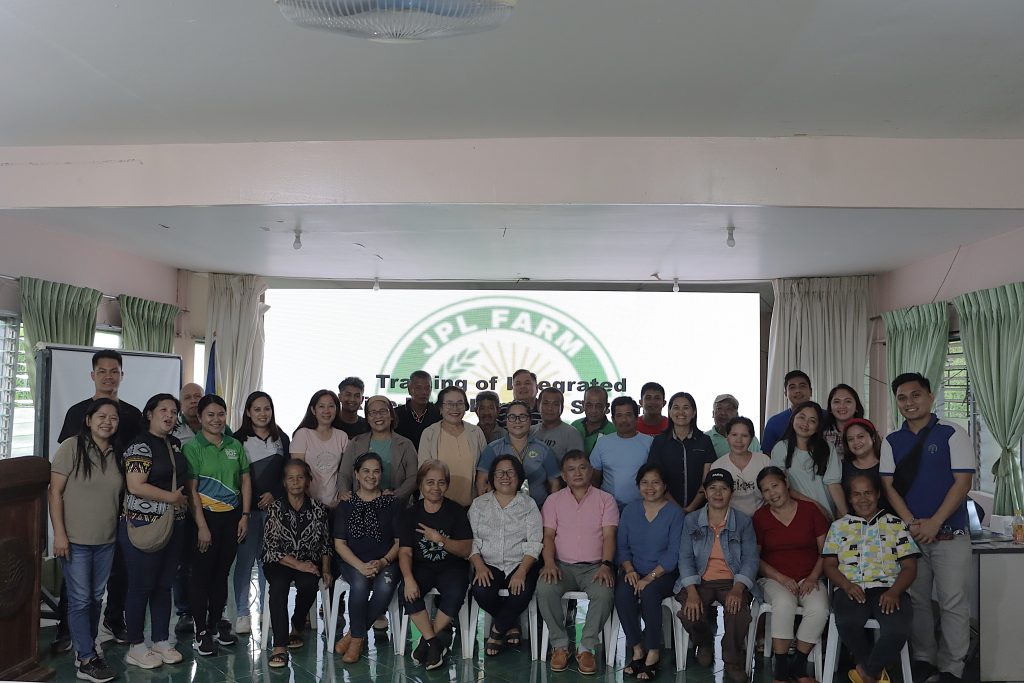
Agri-10 strengthens the promotion of integrated rice-duck farming system in NorMin.
MALAYBALAY CITY, BUKIDNON — The Department of Agriculture – Regional Field Office 10 (DA-10), through its Rice Program, held a three-day Palayamanan-Integrated Rice-Duck Farming System (Palayamanan IRDFS) Training on October 16-18 at Northern Mindanao Agricultural Crops and Livestock Research Complex (NMACLRC), here.
This, to scale up the Palayamanan System in the region, aims to enhance rice cultivation yield through various productions. Palayamanan, a term coined from the words ‘palay’ (rice) and ‘kayamanan’ (wealth), is a diversified, intensified, and integrated rice-based farming system combined with livestock, poultry, fish, and other crop production.
Senior Science Research Specialist Belen M. Tabudlong from the Philippine Rice Research Institute (PhilRice) – Agusan discussed the different components of the Palayamanan System.
By integrating tree production such as growing fruits, vegetables, forest trees, and bamboo, rice fields create multifunctionality with the support of windbreaks. Moreover, diversifying food-generating activities on the farm can also be done through poultry production, one of which is the IRDFS.
The IRDFS is a farming method that raises ducks in rice paddies alongside rice cultivation. Ducks eat pests in the crop, stir water, limit weeds, and manure the rice. By their presence in the field, farms become cost-efficient compared to using pesticides and fertilizers. It also improves yield as the farm becomes a dual income of other production, promoting agricultural sustainability.
As one of the adopters of the IRDFS from Lala, Lanao del Norte, James P. Longcob has shared his best practices with the participants, including the farming system’s duckling management, potential challenges, and its control measures.
As he also presented the ingredients, procedures, and uses of the concoctions he applies on his farm for both crops and livestock, Longcob urged the participants to adopt some, including Indigenous Microorganism (IMO), Fermented Plant/Fruit Juice (FPJ, FFJ), Oriental Herbal Nutrient (OHN), and Fish Amino Acid (FAA).
As part of its 100-hectare rice field target in the region of adopting the IRFDS, the DA-10 will distribute 15,000 ducklings, 500 rolls of net, 500 bags of feeds, 100 knapsack sprayers with 16-liter capacities, and 100 liters of organic fertilizer (soil ameliorants) to the farmers, whose farms were prior validated.
Luningning D. De Guzman from Brgy. Paitan, Quezon, Bukidnon, who and his husband manage a 2-hectare rice field, expressed her hopes and gratitude to DA-10.
“Pasalamat gyud [ko] og dako kay [ang] DA nisuporta sa amoa [mga] mag-uuma [ug] nihatag siya ani nga project para madungagan ang kita namo nga mga mag-uuma” (I am deeply grateful to the DA for supporting the farmers by providing this project to help increase our income), she expressed.
Said training also covered discussions on Climate Smart Livestock Production to equip participants with strategies for climate change adaptation and mitigation, and on Financial Literacy, focusing on farm planning, budgeting, and record-keeping to help farmers effectively manage their resources and enhance the overall profitability of their farming operations.# (BJCE)
